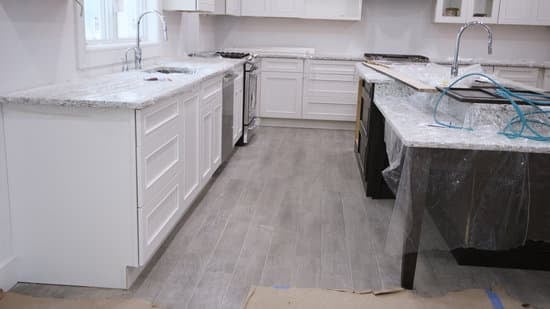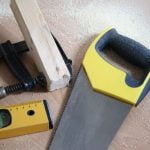Can I borrow more on my mortgage for home improvements? Many homeowners may find themselves asking this question when they are looking to make significant upgrades or renovations to their property. Understanding how the borrowing limits work and what factors can affect them is crucial in making an informed decision. When it comes to increasing your mortgage for home improvements, it’s important to weigh the potential benefits and risks before moving forward with the application process.
One of the first steps in determining if you can borrow more on your mortgage for home improvements is understanding the concept of maximum mortgage borrowing limits. These limits are set by lenders based on various factors such as your income, credit score, and current debts. Additionally, the value of your home and its equity will also play a significant role in determining how much you can borrow for home improvements.
Calculating your home’s equity is essential in understanding how much you may be able to borrow. Equity refers to the difference between the current market value of your home and the amount you still owe on your mortgage. The more equity you have, the more likely you will be able to increase your mortgage for home improvements. It’s important to consider these factors before exploring different types of mortgage loans available for home improvements.
Once you have a clear understanding of your borrowing limits and your home’s equity value, it’s essential to explore the different types of mortgage loans that are available for funding home improvements. Options such as cash-out refinancing, home equity loans, and home equity lines of credit all have their own set of benefits and drawbacks that should be carefully considered before making a decision.
Determining Your Home’s Equity Value
When considering borrowing more on your mortgage for home improvements, one of the key factors to take into account is the equity value of your home. Understanding how to calculate your home’s equity and recognizing the importance of this value in relation to borrowing is crucial. Here are some important points to consider:
- Calculate Your Home’s Equity: To determine your home’s equity, subtract the amount you owe on your mortgage from the current market value of your home. This will give you a clear picture of how much of the property you actually own.
- Importance of Equity: The amount of equity you have in your home plays a significant role in how much extra you can borrow for home improvements. Lenders often use this figure as a determining factor when considering loan applications.
Having a strong understanding of your home’s equity value is essential when contemplating borrowing additional funds on your mortgage for renovations or upgrades. By knowing how to calculate this figure and recognizing its relevance in the borrowing process, you can make informed decisions regarding potential loan options.
Ultimately, being aware of and appreciating the connection between your home’s equity and borrowing limits provides valuable insight into how best to proceed with financing renovation projects. Whether it involves cash-out refinancing, home equity loans, or other types of mortgage loans designed for home improvements, understanding your home’s equity value is fundamental to making well-informed financial decisions.
Different Types of Mortgage Loans for Home Improvements
When it comes to financing home improvements through your mortgage, there are several options to consider. Each type of mortgage loan has its own set of benefits and drawbacks, so it’s important to understand how they work before making a decision. Here are the different types of mortgage loans commonly used for home improvements:
- Cash-out Refinancing: This involves taking out a new mortgage that is larger than your existing one and using the difference in cash for home improvements. This allows you to take advantage of lower interest rates and spread the cost of renovations over the life of the loan.
- Home Equity Loans: These are fixed-rate loans that allow homeowners to borrow a specific amount based on the equity in their home. The loan is disbursed in one lump sum, making it suitable for large projects with a fixed budget.
- Home Equity Line of Credit (HELOC): Similar to a credit card, a HELOC allows you to borrow against the equity in your home up to a certain limit. You can withdraw and repay funds as needed, making it a flexible option for ongoing or unpredictable renovation costs.
Each type of loan has its own advantages and disadvantages. Cash-out refinancing may offer lower interest rates but comes with closing costs and potentially higher monthly payments. Home equity loans provide a lump sum for specific purposes but require careful budgeting to avoid overspending.
HELOCs offer flexibility but come with variable interest rates that could increase over time. It’s essential to weigh these factors against your individual financial situation and renovation needs before choosing the right mortgage loan for your home improvements.
The Application Process for Increasing Your Mortgage
The process of increasing your mortgage for home improvements involves several steps and requires careful consideration. Whether you’re looking to renovate your kitchen, add an extra room, or make other upgrades to your home, understanding the application process is crucial.
Step 1: Assessing Your Financial Situation
Before applying for an increase in your mortgage, it’s important to assess your current financial situation. This includes taking a close look at your income, expenses, and existing debt. Lenders will also consider your credit score and employment history when determining whether to approve you for additional borrowing.
Step 2: Contacting Your Lender
Once you’ve evaluated your financial standing, the next step is to contact your lender to discuss the possibility of increasing your mortgage for home improvements. They can provide valuable information about the options available to you and guide you through the application process.
Step 3: Providing Necessary Documentation
When applying for an increase in your mortgage, you will need to provide various documents such as pay stubs, tax returns, bank statements, and information about the home improvements you intend to make. Be prepared to demonstrate how the funds will be used and how they will add value to your property.
Navigating the application process for increasing your mortgage can be complex, but with careful planning and preparation, it is possible to secure funding for home improvements that can enhance the comfort and functionality of your living space.
Understanding the Risks and Responsibilites
Borrowing more on your mortgage for home improvements can be a convenient way to finance renovations or upgrades to your property. However, it’s important to understand the potential risks and responsibilities that come with increasing your mortgage. By being aware of these factors, you can make informed decisions and manage your financial obligations effectively.
Exploring Potential Risks
One of the biggest risks of borrowing more on your mortgage is the potential for increased debt. By taking on additional funds, you are essentially adding to the amount you owe on your home. This can lead to higher monthly payments and an extended repayment period. It’s crucial to assess whether you will be able to afford these increased financial obligations in the long run.
Another risk to consider is the impact on your home’s equity. By borrowing more against your property, you are using up more of its value as collateral. This means that if the housing market experiences a downturn, you could end up owing more than your home is worth, which is known as being “underwater” on your mortgage.
Tips for Managing Financial Obligations
To mitigate the risks associated with borrowing more on your mortgage for home improvements, it’s important to have a solid financial plan in place. Consider creating a budget that includes not only the cost of the renovations but also the increased monthly payments resulting from the larger loan amount.
Additionally, it’s wise to have an emergency fund set aside to cover unexpected expenses or financial setbacks. Having a safety net in place can provide peace of mind and help prevent defaulting on your mortgage in case of unforeseen circumstances.
Finally, carefully review the terms and conditions of any loan or increase in mortgage before committing to ensure that you fully understand all associated costs and obligations. Seeking advice from a financial advisor or mortgage professional can also provide valuable insights into managing these responsibilities effectively.
Impact on Your Monthly Payments and Interest Rates
Borrowing more on your mortgage for home improvements can have a significant impact on your monthly payments and interest rates. When you increase your mortgage, you are essentially taking on more debt, which will result in higher monthly payments. Additionally, depending on the terms of your new loan, your interest rates may also change. It is crucial to understand the long-term financial implications of these changes before committing to borrowing more on your mortgage.
One of the main consequences of increasing your mortgage for home improvements is the potential increase in your monthly payments. With a larger loan amount, you will be required to make higher monthly payments to cover the additional principal and interest. It’s important to calculate these new payments and ensure that they are manageable within your budget before proceeding with borrowing more on your mortgage.
In addition to higher monthly payments, increasing your mortgage for home improvements can also lead to changes in interest rates. Depending on the type of loan you choose and current market conditions, your interest rates may go up or down.
It’s essential to carefully review and compare different loan options to understand how each one will impact your interest rates over time. Keep in mind that even a small change in interest rates can have a significant effect on the overall cost of borrowing for home improvements over the life of the loan.
Considering Alternatives to Increasing Your Mortgage
When it comes to funding home improvements, increasing your mortgage is not the only option available. Before making a decision, it’s important to explore alternative financing options that may better suit your financial situation and needs.
One alternative is using personal loans, which can be a great way to access funds for smaller projects without impacting your mortgage. Additionally, if you have a good credit score, you may qualify for a low-interest personal loan, making it an attractive option.
Another alternative to increasing your mortgage is utilizing credit cards for home improvement expenses. Many credit cards offer rewards programs and cash back incentives, providing a cost-effective way to finance home renovations. However, it’s crucial to carefully manage credit card spending and payments to avoid high-interest debt that could lead to financial strain.
Lastly, other sources of funding such as home improvement loans or lines of credit can also be viable alternatives to increasing your mortgage. These options are specifically designed for funding renovation projects and may have more favorable terms compared to adjusting your existing mortgage. It’s essential to thoroughly research each alternative and consider factors like interest rates, repayment terms, and potential impacts on your overall financial situation before making a decision.
| Financing Option | Pros | Cons |
|---|---|---|
| Personal Loans | Quick access to funds; no impact on mortgage | Higher interest rates for unsecured loans; limited borrowing amount |
| Credit Cards with Rewards Programs | Potential cash back incentives; no collateral required | High-interest rates if balances are not paid in full; impact on credit score if not managed properly |
| Home Improvement Loans/Lines of Credit | Favorable terms for renovation projects; specific-purpose financing | Potential fees and closing costs; may require equity as collateral |
Working With Lenders and Financial Advisors
In conclusion, increasing your mortgage for home improvements can be a viable option if you have sufficient equity in your home and a clear plan for the renovations. However, it’s important to carefully consider the potential risks and responsibilities that come with borrowing more on your mortgage. Working with lenders and financial advisors can provide valuable guidance in understanding your borrowing limits, selecting the right type of loan, and managing the long-term financial implications.
Finding the right lender or financial advisor is crucial in this process. Look for professionals who have experience in mortgage lending and home improvement financing. Ask about their track record with previous clients and inquire about their knowledge of different types of loans available for home improvements. It’s also important to discuss their fees and how they will be compensated for their services.
Ultimately, increasing your mortgage for home improvements is a decision that should be made after careful consideration of all options available. It’s important to weigh the pros and cons of each type of loan, as well as consider alternative financing options such as personal loans or credit cards.
By working with reputable professionals and fully understanding the potential impact on your monthly payments and long-term financial obligations, you can make an informed decision on how to best finance your home improvement projects.
Frequently Asked Questions
Can I Increase My Mortgage for Home Improvements?
Yes, it is possible to increase your mortgage for home improvements. One option is a cash-out refinance, where you refinance your existing mortgage for a higher amount and receive the difference in cash. Another option is a renovation loan, specifically designed for financing home renovations and improvements.
In both cases, you will need to meet certain requirements and go through the loan application process with your lender. It’s important to weigh the pros and cons of increasing your mortgage and consider other financing options before making a decision.

I’m thrilled to have you here as a part of the Remodeling Top community. This is where my journey as an architect and remodeling enthusiast intersects with your passion for transforming houses into dream homes.





